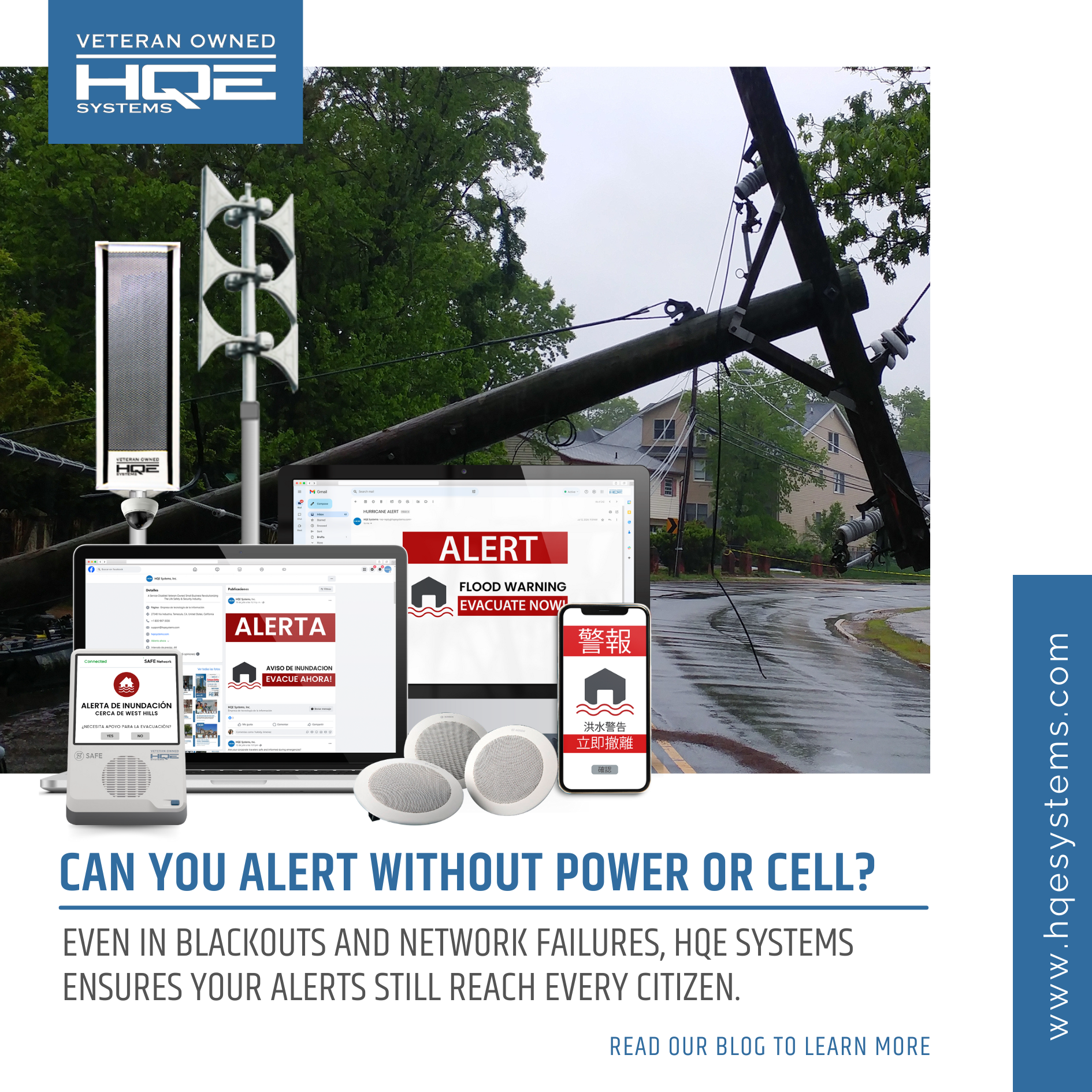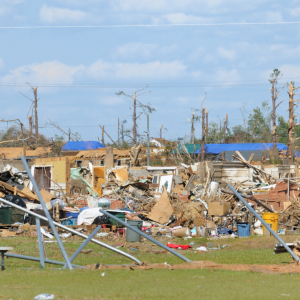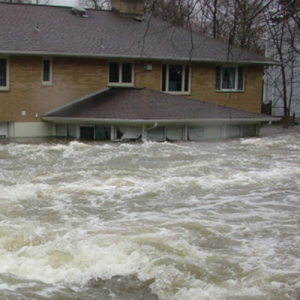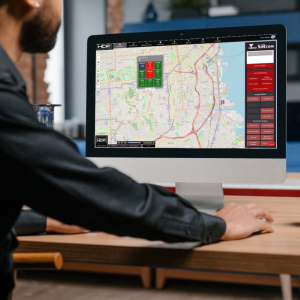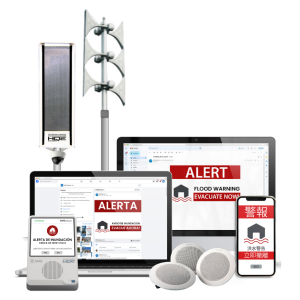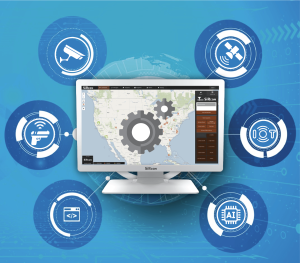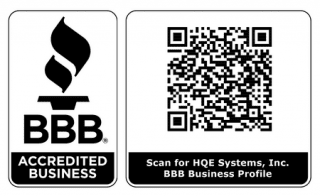Why 2025 Has Been a Wake Up Call
From tornadoes in the Midwest to wildfires in California and unexpected earthquakes in the Southeast, 2025 has already stretched emergency response systems beyond their breaking point. What is most concerning is not just the force of these disasters but the silence that followed. In several major incidents this year, power outages and cellular blackouts knocked out traditional alert systems, leaving thousands unaware when every second counted.
In this blog, we will examine three significant U.S. disasters of 2025 where emergency alerts failed to reach people in time. We will unpack the failures, explore the implications, and highlight resilient technologies that are quietly transforming emergency communication. As natural threats grow stronger and more unpredictable, the reliability of our alerts has become more important than ever.
A Year of Blackouts and Breakdowns
Tornado in St. Louis, Missouri – May 2025
At 2:39 p.m. on May 16, an EF3 tornado struck Clayton, Missouri, moving through north St. Louis and into Illinois. With winds reaching 152 miles per hour, it remained on the ground for almost 24 minutes, damaging more than 5,000 homes and buildings. This was the city’s first fatal tornado in over six decades. It killed five people, including three children, and injured nearly 40 others. Over 80,000 customers experienced power outages, some lasting days.
Perhaps the most devastating part was the lack of warning. Not one of the city’s 60 outdoor sirens was activated. The National Weather Service had issued a tornado alert five minutes before the storm hit, but residents never heard a signal. According to CBS News, the city’s emergency commissioner was attending a workshop at the time. Delayed communication and suspected technical issues contributed to the system’s failure. Without a functioning alert, entire neighborhoods were left unaware of the approaching danger.
Hurricane Kiera in Florida – June 2025
In June, Hurricane Kiera made landfall on Florida’s central coast, bringing severe winds and flooding. The storm damaged infrastructure across several counties, and more than one million residents lost electricity. Cell towers went down, and many areas experienced communication outages for nearly an entire day. CNN reported that emergency messages were significantly delayed or never reached rural and coastal zones.
Without timely alerts, residents in mobile homes and evacuation zones had little direction. Roads became flooded before some even knew they needed to leave. Officials attempted to issue local radio warnings and used social media to fill the gap, but digital platforms were inaccessible to those without power or signal.
In some towns, emergency managers leaned on amateur radio operators to distribute evacuation updates. In-person outreach efforts helped, but there were gaps in coverage. This delay had real consequences. Several residents stayed behind, believing the storm had weakened or passed, and emergency responders had to perform water rescues in high-risk areas.
While power crews and state agencies worked around the clock, the hurricane highlighted a major concern: when electricity and network infrastructure fail, entire communities can be cut off from life-saving instructions.
Texas Flash Floods – July 2025
On July 4, 2025, Central Texas was overwhelmed by catastrophic flash flooding. Kerr County, home to Camp Mystic and the unincorporated area of Center Point, suffered the greatest losses. According to ABC News, at least 132 people died and 101 remain missing. Among the victims were 36 children.
Floodwaters surged through the region at more than 1.5 million gallons per second, collapsing bridges, washing out roads, and knocking out power, cell service, and internet. Families were left in total darkness. With no sirens or backup systems, many received no warning. For some, the first sign of danger was water rushing into their homes.
This was not the first time Kerr County faced such a tragedy. In 2017, another deadly flood raised alarms about the county’s lack of warning systems. Officials considered sirens but ultimately rejected them due to high cost and concerns over false alarms.
When the 2025 flood hit, nothing had changed. Communities were still unprotected. Children, seniors, and those without mobile access were hit hardest. Local leaders admitted they had no way to coordinate evacuation efforts once communications failed.
This was not just a natural disaster. It was the result of missed opportunities and years of delay. As outlined in our earlier blog post, the need for resilient, power-independent alert systems is no longer optional. Lives depend on smarter decisions and faster action. The time to prepare is now.
When the Message Doesn’t Come
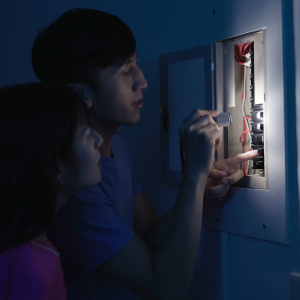
Silent Systems During Critical Moments
When disaster strikes, seconds matter. Across several emergencies in 2025, alert systems failed just as communities needed them most. Tornadoes, hurricanes, and floods hit hard, but too many residents were left without warning.
In St. Louis, the National Weather Service issued a tornado alert, but city sirens never sounded. Many families realized something was wrong only after hearing roaring winds or seeing debris flying. Emergency alerts that rely on cellular networks also failed due to widespread power outages.
During Hurricane Kiera in Florida, over one million residents lost power and cell service. Many counties reported delays in emergency messaging, with some areas going hours without updates. In rural zones, families reported not receiving evacuation notices in time to reach safety.
During the July floods in Texas, power outages and damaged cell towers left entire communities cut off. Emergency managers could not send timely alerts, and many residents received no warning at all. With no power, no signal, and no backup systems, people were left in the dark.
These moments are not just unfortunate. They are unacceptable. Lives depend on fast, reliable alerts. If one part of the system fails, there must be others ready to deliver the message. In 2025, too many communities discovered their warning systems had no backup.
Gaps in the System
What went wrong during these events was not a mystery. Many communities had alert systems in place. The issue was that they could not function when power or networks failed.
In cities and towns across the country, sirens depend on electricity. Many do not have backup batteries or solar charging. When the grid fails, the sirens go quiet. In some places, local PA systems also failed because they lacked power sources that could operate independently.
Many digital systems rely on human activation. That means a staff member has to push a button, log into a dashboard, or approve a message. But what happens when that person is not available or the interface crashes? In multiple 2025 incidents, alerts were delayed or never sent because the system had no automation.
Another major gap is coverage. Underserved areas often lack access to any type of reliable alert. That includes rural neighborhoods, small towns, and older housing communities. These regions sometimes rely on just one method of communication, like a single siren or a one-time text. If that one system fails, they are left unprotected.
Finally, many systems lacked redundancy. They relied on a single point of failure—one tower, one app, one siren. If that one system was compromised, there were no alternatives in place to fill the gap. A strong emergency network needs overlapping layers of communication to ensure that the message reaches everyone.
What Needs to Change
Here are four key issues revealed in 2025 and what communities should do to fix them:
Power Resilience
Many alert systems went offline because they lacked battery or solar backup. Communities should equip sirens, PA systems, and communication towers with independent energy sources that operate during outages.
Automation
Alerts that required human approval caused dangerous delays. Cities and counties should upgrade to systems that can activate automatically based on real-time weather data or environmental sensors.
Full Coverage
Large sections of the population were not reached. Agencies must conduct mapping assessments and install alert devices in every. This includes both outdoor sirens and indoor alert units in public buildings.
Redundant Communication Channels
When alerts depended on one method, they failed easily. Emergency alert strategies should use multiple channels: mobile phones, loudspeakers, digital signage, emails, radio broadcasts, indoor alert units, and more. If one system goes down, another can carry the message forward.
Improving in these areas is not just about better equipment. It is about creating a culture of readiness where systems work together to protect every person, no matter the conditions.
A Resilient Response: What’s Working Now
In a year marked by storms, floods, and unexpected power failures, some communities are already demonstrating that it is possible to alert people even when the grid and cell networks go down. The key lies in combining different technologies, ensuring backup power, and removing the need for human activation during a crisis.
This section explores the systems that have proven to work even under pressure and how cities across the country are using technology to restore trust and resilience in public safety.
SiSA Smart Alert and SAFE Network
SiSA Smart Alert is HQE Systems’ cloud-based platform that connects directly with the National Weather Service and other threat data providers. When conditions meet certain thresholds, such as a confirmed tornado, wildfire proximity, or extreme heat, SiSA automatically triggers alerts.
These alerts are sent through sirens, public address systems, mobile notifications, digital signage, and social media platforms, all without waiting for manual input. This makes it especially valuable in moments when staff are unavailable or when traditional infrastructure is damaged.
Working alongside SiSA is the SAFE Network. It uses mesh connectivity and solar-powered nodes to keep emergency communication running during blackouts or network failures. SAFE Units are placed indoors in schools, shelters, and public buildings and provide loud multilingual audio and visual alerts. These units serve as the final layer of coverage, ensuring people inside buildings receive life-saving information no matter the external conditions.
Paradise California shows how readiness creates resilience
After enduring one of the most destructive wildfires in California history, the Town of Paradise chose to rebuild smarter. Part of their strategy was to ensure no resident would be left without a warning in future emergencies. That is why they installed SAFE Units, indoor emergency alert devices designed to function even when the power is out or cell service is unavailable.
These units can be placed in schools, community centers, churches, and public buildings. When activated, they produce loud audio alerts and bright visual signals in multiple languages. The goal is to reach people wherever they are, regardless of language, location, or communication barriers.
Paradise is leading the way by treating emergency communication as a daily necessity, not just a response tool. Their decision to adopt resilient, independent alerting shows how small towns can set a national example. Instead of waiting for a failure to occur, they are ensuring that when the next fire or storm comes, everyone will hear the warning loud and clear.
Rebuilding Quiet Confidence
People should not have to guess whether their alert system will work during a crisis. They should know. That certainty only comes through reliable technology and consistent performance.
Communities need systems that operate under pressure. Whether during a wildfire, hurricane, or unexpected storm, alerts should reach people wherever they are. This includes outdoor areas, indoor spaces, and mobile devices. Backup power, automated activation, and multiple alert methods help ensure that no single failure prevents a warning from going out.
Reliability is the foundation of trust. Each time an alert reaches its audience clearly and on time, public confidence grows. Over time, that confidence becomes part of a community’s resilience.
Emergency alerts should never be a gamble. With the right systems in place, there can be a promise that help is on the way and that people are never left in the dark.
A Better Way Forward
Redundancy Builds Confidence
A single method of alerting is not enough. If a text does not go through or a siren fails, the message still needs to reach people another way.
Layered systems ensure that alerts are heard. Outdoor sirens, indoor speakers, signage, and automated digital notifications work together. This approach reduces the risk of total failure and gives communities confidence that they will be informed.
Technology That Works Without Help
Modern emergency systems should be automatic, reliable, and power-independent. They should support multiple languages and reach people wherever they are.
The most effective systems do not need attention every day. They are designed to respond immediately when needed, even if no one is there to push a button. This quiet reliability is what keeps people safe and protected.
Conclusion
In 2025, communities across the United States have faced powerful storms, fast-moving wildfires, and widespread outages. But the most unsettling moments were not caused by nature alone. They came in the silence. Alerts that never arrived. Sirens that stayed quiet. Apps that failed when they were needed most.
The good news is that these gaps can be closed. Technologies like SiSA Smart Alert, the SAFE Network, and indoor SAFE Units offer a stronger path forward. These systems work when others fail. They inform, protect, and restore trust.
Now is the time to take what this year has shown us and use it to build something better. A future where alerts always reach the people who need them. A future where every warning is heard. Everywhere.
HQE Systems is a certified Veteran Owned Company. For more information about HQE Systems Inc. and its emergency management, electronic security, and integration solutions, please visit www.hqesystems.com.

Contact: David Ditto (Early Warning Systems Subject Matter Expert)
Email: David.Ditto@hqesystems.com
Phone Number: (843) 872-7020
____________________
HQE Systems, Inc. | HQE is a Minority-Owned Service Disabled Veteran Owned Small Business (SDVOSB) providing full solutions for: Mass Notification Systems, Electronic Security Systems, Software Development Services, Contract Support, and Prototyping Services. As a brand-agnostic solutions provider, HQE prides itself in providing the BEST solution for the project. HQE possesses over 30+ factory certifications and reseller licenses to ensure our clients receive the highest quality service at the ideal budget. HQE can provide full design, installation, integrations, upgrades, and long-term maintenance support for any size and scope project.

